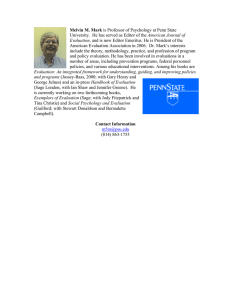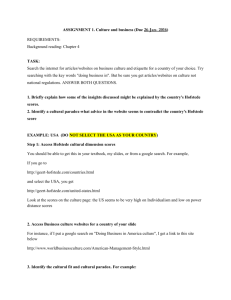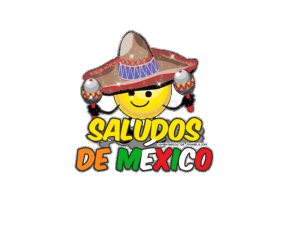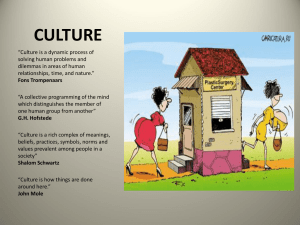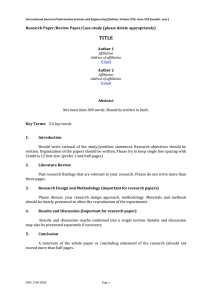Organizational Behavior & Knowledge Management References
advertisement
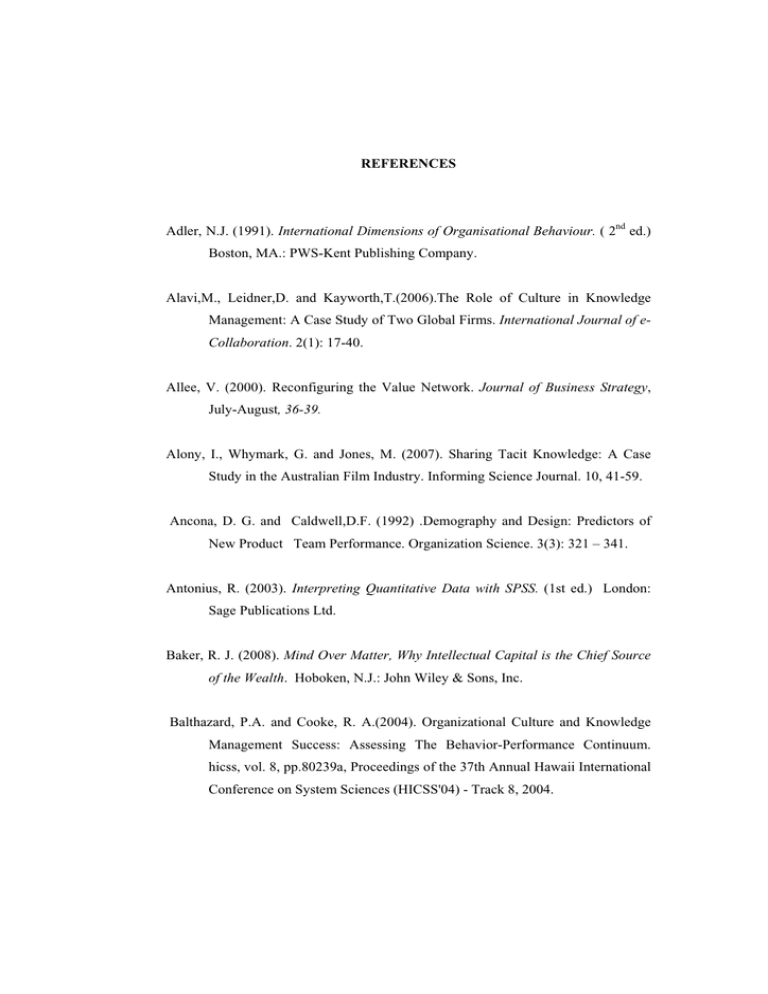
REFERENCES Adler, N.J. (1991). International Dimensions of Organisational Behaviour. ( 2nd ed.) Boston, MA.: PWS-Kent Publishing Company. Alavi,M., Leidner,D. and Kayworth,T.(2006).The Role of Culture in Knowledge Management: A Case Study of Two Global Firms. International Journal of eCollaboration. 2(1): 17-40. Allee, V. (2000). Reconfiguring the Value Network. Journal of Business Strategy, July-August, 36-39. Alony, I., Whymark, G. and Jones, M. (2007). Sharing Tacit Knowledge: A Case Study in the Australian Film Industry. Informing Science Journal. 10, 41-59. Ancona, D. G. and Caldwell,D.F. (1992) .Demography and Design: Predictors of New Product Team Performance. Organization Science. 3(3): 321 – 341. Antonius, R. (2003). Interpreting Quantitative Data with SPSS. (1st ed.) London: Sage Publications Ltd. Baker, R. J. (2008). Mind Over Matter, Why Intellectual Capital is the Chief Source of the Wealth. Hoboken, N.J.: John Wiley & Sons, Inc. Balthazard, P.A. and Cooke, R. A.(2004). Organizational Culture and Knowledge Management Success: Assessing The Behavior-Performance Continuum. hicss, vol. 8, pp.80239a, Proceedings of the 37th Annual Hawaii International Conference on System Sciences (HICSS'04) - Track 8, 2004. 58 Bartol, K. M. and Srivastava, A. (2002). Encouraging knowledge sharing: The role of organizational reward systems. Journal of Leadership & Organizational Studies. 9(1), 64–76. Becerra-Fernandez, I. and Sabherwal, R. (2001). Organizational Knowledge Management: A contingency Perspective. Journal of Management Information Systems, 18(1), 23-55. Becerra-Fernandez, I., Sabherwal, R. and Gonzalez, A. J. (2004). Knowledge Management: Challenges, Solutions, and Technologies, Upper Saddle River, NJ.: Pearson- Prentice Hall. Belbin, M. (1980). Management Teams: Why they Succeed or Fail. ( 1st ed.). London: Heineman. Bock, G. W., & Kim, Y. G. (2002). Breaking the myths of rewards. Information Resources Management Journal. 15(2), 14–21. Botkin, J.W. (1999). Smart Business: How Knowledge Communities Can Revolutionize Your Company. New York, N.Y.: Free Press. Bureš, V. (2003). Cultural Barriers in Knowledge Sharing. E+M Ekonomics and Management, Liberec. special issue. 6:57-62. Byrne, D. (1971). The Attraction Paradigm. New York, NY.: Academic Press. Cady, S.H. and Valentine, J. (1999). Team innovation and perceptions of consideration, What difference does diversity make? Small Group Research. 30(6): 730-750. 59 Carte, T. and Chidambaram, L. (2004). A Capabilities-Based Theory of Technology Deployment in Diverse Teams: Leapfrogging the Pitfalls of Diversity and Leveraging Its Potential with Collaborative Technology. Journal of the Association for Information Systems. 5(11-12):448-471. Chang, Y.T., Church, R., and Zikic, J. (2004). Organizational culture, group diversity and intra-group conflict. Team Performance Management. 10(1/2): 26-34. Chauvel,D. and Despres,C.(2002).A Review of Survey Research in Knowledge Management:1997-2001. Journal of Knowledge Management. 6(3):207-223. Cohen, D. and Pursak,L.(2001). In Good Company: How Social Capital Makes Organizations Work. Boston, MA.: Harvard Business School Press. Crawley, M. J. (2005). Statistics: an Introduction Using R. West Sussex, England: John Wiley & Sons Ltd. De Vaus, D.A. (2002). Surveys in Social Research. ( 5th ed.). Sydney.: Allen & Unwin. Disterer, G. (2001).Individual and social barriers to knowledge transfer. Proceedings of the 34th Hawaii International Conference on System Sciences. Drucker, P.F. (1993). Post-Capitalist Society. New York, N.Y.: HarperCollins. Fahey, L., Prusak, L. (1998). The Eleven Deadliest Sins of Knowledge Management. California Management Review, 40(3): 265-276. Fernandez, J. P. and Barr, M. (1993). The Diversity Advantage. New York,N.Y.: Lexington Books. Hall, E. T. (1959).The silent language. Garden City, NY.: Doubleday. 60 Hambrick, D. C., Davison,S.C., Snell,S.A. and Snow,C.C. (1998). When Groups Consist of Multiple Nationalities: Towards a New Understanding of the Implications. Organization Studies .19(2): 181–205. Hansen, M. T., Nohira, N. and Tierney, T. (1999).What’s your strategy for Managing Knowledge?. Harvard Business Review.77(2):106-116. Harrison, D., Price,K. and Bell,M. (1998) . Beyond Relational Demography: Time and the Effects of Surface- and Deep- Level Diversity on Work Group Cohesion. Academy of Management Journal.41(1): 96-107. Harrison, D.A. and Sin, H (2006). What Is Diversity and How Should It Be Measured? In Konrad, A.M., Prasad, P. and Pringle, J.K. (Eds.). Handbook of Workplace Diversity. (191-216). London, England: Sage Publications Ltd. Harrison, E.F. (1995). The Managerial Decision Making Process. (4th ed.) Houghton Mifflin,Boston, MA. Hegde, D. and Shapira, P. (2007). Knowledge, technology trajectories, and innovation in a developing country context: evidence from a survey of Malaysian firms. International Journal of Technology Management, 40(4), 349-370. Hinton, P.R., Brownlow, C., McMurray, I. and Cozens, B. (2004). SPSS Explained. (1st ed.). New York, NY.: Routledge Inc. Hofstede, G. (1991). Management in a Multicultural Society. Malaysian Management Review. 25(1): 3-12. Hofstede, G. Geert Hofstede Cultural Dimensions. Retrieved October 14, 2009, from Geert Hofstede Cultural Dimensions hofstede.com/hofstede_malaysia.shtml hofstede.com/hofstede_canada.shtml. Website: http://www.geert- and http://www.geert- 61 Housel, T. J. and Bell, A. H. (2001).Measuring and Managing Knowledge. (1st ed.). New York, N.Y.: McGraw-Hill/Irwin. Huysman, M. and De Witt, D. (2002). Knowledge Sharing in Practice. Dordrecht, The Netherlands: Kluwer Academic Publishers. Janis, I. (1972). Victims of Groupthink. Boston, MA.: Houghton-Mifflin. Jehn,K. A., Northcraft, G. B. and Neale, M. A. (1999).Why Differences Make a Difference: A Field Study of Diversity, Conflict, and Performance in Workgroups. Administrative Science Quarterly .44: 741–763. Kanter, R.M. (1977). Men and Women of the Corporation. ( 1st ed.). New York, NY.: Basic Books. Kimmerle, J., Wodzicki, K. and Cress, U. (2008). The social psychology of knowledge management. Team Performance Management. 14(7/8):381-401. Knapp, M. L., and Hall, J. A. (2010). Nonverbal Communication in Human Interaction. (7th ed.). Belmont, CA.: Wadsworth. Knippenberg, D., De Dreu ,C . and Homan , A. C. (2004). Work Group Diversity and Group Performance: An Integrative Model and Research Agenda. Journal of Applied Psychology.89(6): 1008-1022. Kochan, T., Bezrukova, K., Ely, R., Jackson, S., Joshi, A., Jehn, K., Leonard, J., Levine, D. and Thomas, D. (2003). The Effects of Diversity on Business Performance: Report of the Diversity Research Network. Human Resource Management. 42(1): 3-21. Koskinen, K.U., Pekka, P. and Hannu, V. (2003). Tacit knowledge acquisition and sharing in a project work context. International Journal of Project Management. 21: 281-290. 62 Lau, D. C. and Murninghan, J.K. (1998). Demographic Diversity and Faultlines: The Compositional Dynamics of Organizational Groups. Academy of Management Review. 23(2): 325–340. Liedtka, J. (1999). Linking competitive advantage with communities of practice. Journal of Management Inquiry. 8(1): 5-16. Lincoln, J. R. and Miller, J. (1979).Work and friendship ties in organization: a comparative analysis of relational networks. Administrative Science Quarterly. 24:181-99. Lind, E. A., Tyler, T. R., and Huo,Y. J. (1999). The Two Psychologies of Conflict Resolution: Differing Antecedents of Pre-experience Choices and PostExperience Evaluations. Group Process and Intergroup Relations. 2(2):99118. Loden, M. and J. Rosener. (1991). Workforce America! Managing Employee Diversity as a Vital Resource. Homewood, IL: Business One Irwin. Macrae, C., and Bodenhausen, G. V. (2000). Social cognition: Thinking categorically about others. Annual Review of Psychology, 51: 93-120. Matzler, K., Renzl, B., Müller, J., Herting, S., and Mooradian, T.A. (2007). Personality traits and knowledge sharing. Journal of Economic Psychology. 29:301-313. McDermott, R. and O’Dell, C. (2001). Overcoming cultural barriers to knowledge sharing. Journal of Knowledge Management, 5(1):76-85. McLeod, P., Lobel,S. and Cox, Jr.T. (1996). Ethnic Diversity and Creativity in Small Groups. Small Group Research. 27(2):248-264. Messick, D. and Massie, D. (1989). Intergroup Relations. Annual Review of Psychology. 40:45-81. 63 Milliken, F. J. and Martins, L. L. (1996). Searching for common threads: understanding the multiple effect of diversity in organizational groups. Academy of Management Review. 21(2): 402-433. Ministry of Tourism of Malaysia. Tourism Malaysia: About Us: Culture and Heritage: People. Retrieved November 3, 2009, from the Tourism Malaysia Website: http://www.tourism.gov.my/en/about/culture.asp. Moore, S. (1999). Understanding and managing diversity among groups at work: key issues for organizational training and development. Journal of European Industrial Training, 23(4/5): 208-217. Mor Barak, M. E. and Levin, E. (2002). Outside of the corporate mainstream and excluded from the work community: a study of diversity, job satisfaction and well-being. Community, Work & Family, 5(2): 133-157. Mortensen, M. and Hinds, P. J. (2001). Conflict and shared identity in geographically distributed teams. The International Journal of Conflict Management. 12(3):212-238. Nayir, D. Z. and Uzuncarsili, U. (2008). A cultural perspective on knowledge management: the success story of Sarkuysan Company. Journal of Knowledge Management.12(2):141-155. Nemiroff, P. M., and Pasmore, W. A. (1975). Lost at Sea: A Consensus Seeking Task. In The Annual Handbook for Group Facilitators. (28-34). La Jolla, CA.: University Associates. Nonaka, I.(1994). A dynamic theory of organizational knowledge creation. Organizational Science (providence, R.I.).5(1):14-37. 64 Nonaka, I. and Takeuchi,H.(1995).The Knowledge-Creating Company, How Japanese Companies Create the Dynamics of Innovation. New York, N.Y.: Oxford University Press. O’Dell,C. and Grayson,C.J.(1998).If we knew what we know: identification and transfer of internal best practices. California Management Review. 40(3):154174. Osterloh, M. and Frey, B. S. (2000). Motivation, knowledge transfer, and organizational forms. Organization Science.11(5):538-550. Palanisamy, R. (2007). Organizational Culture and Knowledge Management in ERP Implementation: An Empirical Study. Journal of Computer Information Systems. 45(7): 100-120. Papoutsakis, H. (2007). Sharing Knowledge in the Organisation: a Retrospective Analysis and an Empirical Study. The Electronic Journal of Knowledge Management.5(2):231 - 244 , available online at www.ejkm.com. Pitts, D. W. (2005). Diversity, representation, and performance: Evidence about race and ethnicity in public organizations. Journal of Public Administration Research & Theory, 15(4): 615-631. Pozler, J. T., Milton, L. P. and Swann Jr., W. B. (2002). Capitalizing on Diversity: Interpersonal Congruence in Small Work Groups. Administrative Science Quarterly, 47(2): 296-324. Riege, A. (2005).Three Dozen Knowledge-Sharing Barriers Managers Must Consider. Journal of Knowledge Management. 9(3):18-35. Rowley, J. (2000). From learning organization to knowledge entrepreneur. Journal of Knowledge Management. 4(1): 7–15. 65 Saidwhat?: Funny Quotes, Author Quotes and quotes from famous Celebrities: Nelson Mandella Quotes. Retrieved February 20, 2010, from: http://www.saidwhat.co.uk/quotes/political/nelson_mandela/if_you_talk_to_a _man_9870. Simons, T. L. and Peterson, R. S. (2000). Task conflict and relationship conflict in top management teams. The pivotal effects role of intragroup trust. Journal of Applied Psychology. 85:102-111. Sirkin, R. M. (2006). Statistics for the Social Sciences. (3rd ed.). Thousand Oaks, CA.: Sage Publications Inc. Stapleton, J. J. (2003). Executive’s Guide to Knowledge Management, the Last Competitive Advantage. Hoboken,N.J.: John Wiley & Sons,Inc. Staples, D. S. and Zhao, L. (2006). The Effects of Cultural Diversity in Virtual Teams Versus Face-to-Face Teams. Group Decision and Negotiation . 15:389-406. Stephenson, K. and Lewin, D. (1996). Managing workforce diversity: macro and micro level HR implications of network analysis. International Journal of Manpower. 17(4&5): 168-96. Tajfel, H. (1982). Human Groups and Social Categories: Studies in social psychology . Cambridge, UK: Cambridge University Press. Thomas, K. (1976). Conflict management in organisations, In Dunnette, M.D. and Bass, B.M. (Eds), Handbook of Organisational Behaviour, Sage, New York, NY. Thomas, D. A. and Alderfer, C. P. (1989). The influence of race on career dynamics: theory and research on minority career experience. In Arthur, M.B., Hall, D.T. and Lawrence, B.S. (Eds). Handbook of Career Theory. (133-58). Cambridge: Cambridge University Press. 66 Thompson, J. D. (1967). Organizations in action: social science bases of administrative theory. New York, NY.: McGraw-Hill. Timmerman, T.A. (2000), Racial Diversity, Age Diversity, Interdependence, and Team Performance. Small Group Research, 31(5): 592-606. Tsikriktsis, N. (2005), A review of techniques for treating missing data in OM survey research. Journal of Operations Management, 24: 53-62. Tsui, A.S., Egan,T.D. and O’Reilly,C. A. (1992). Being Different: Demography and Organizational Attachment. Administrative Science Quarterly. 37(4):549579. Turner, J. C., Hogg, M. A., Oaks, P. J. Reicher, S. D. and Wetherel, M. S. (1987). Rediscovering the Social Group: A Social Categorization Theory. Oxford, UK: Blackwell. Vodosek, M. (2007). Intragroup conflict as a mediator between cultural diversity and work group outcomes. International Journal of Conflict Management. 18(4): 345-375. Walczak, S. (2008).Knowledge Management and Organizational Culture, An International Research Perspective. The Learning Organization. 15(6):486494. Watson, W., Kumar,K. and Michaelsen, L. (1993). Cultural Diversity’s Impact on Interaction Process and Performance: Comparing Homogenous and Diverse Task Groups. Academy of Management Journal. 36(3):590-602. Weinberg, S.L. and Abramowitz, S.K. (2002). Data Analysis for the Behavioral Sciences Using SPSS. ( 1st ed.). Press. New York, N.Y.: Cambridge University 67 Welch, D. E., and Welch, L. S. (2008). The Importance of Language in International Knowledge Transfer. Management International Review.48(3), 339-360. Williams, K.Y. and O’Reilly, C. A. (1998). Demography and Diversity in Organizations: A Review of 40 Years of Research. Research in Organizational Behavior. 20: 77–140. Wilson, F. D. (2003). Ethnic niching and metropolitan labor markets. Social Science Research. 32: 429-466. Wittenbaum, G.M. and Stasser, G. (1996). Management of information in small groups. In Nye, J.L. & Brower, A.M. (Eds.). What's social about social cognition? Research on socially shared cognition in small groups.(3-28). Thousand Oaks, CA: Sage Publishing. Yang, J.T (2007). Knowledge sharing: Investigating appropriate leadership roles and collaborative culture. Journal of Tourism Management. 28:530-543. Zheng, W. et al., Linking organizational culture, structure, strategy, and organizational effectiveness: Mediating role of knowledge management, J Bus Res (2009), doi:10.1016/j.jbusres.2009.06.005.
